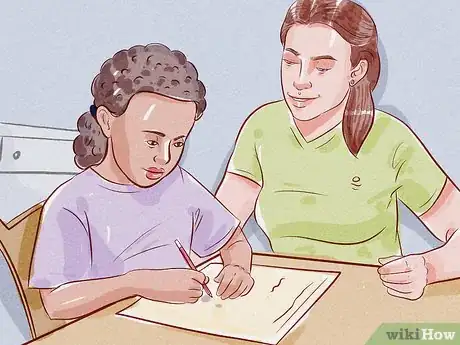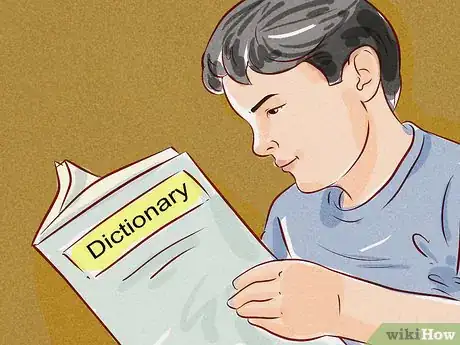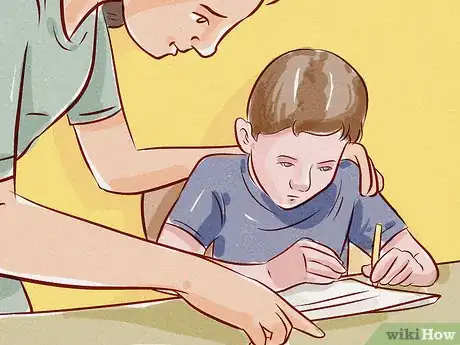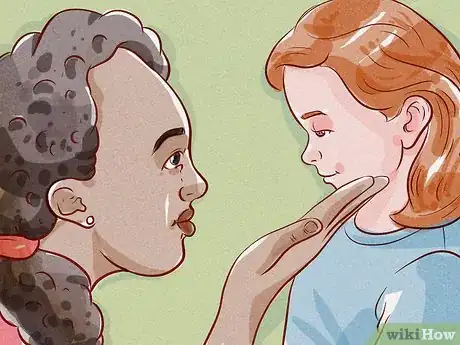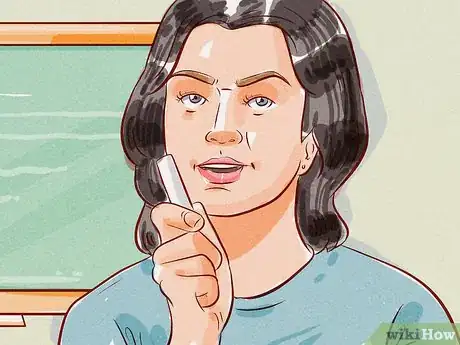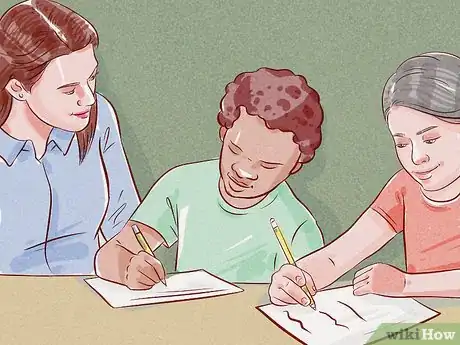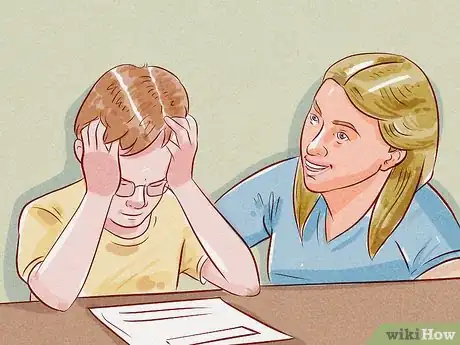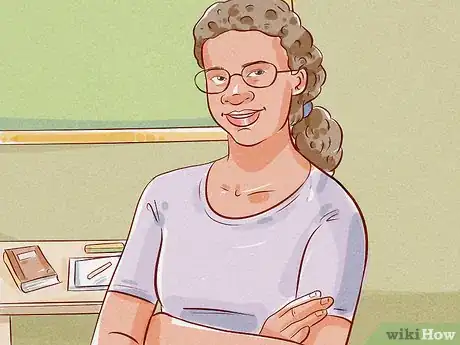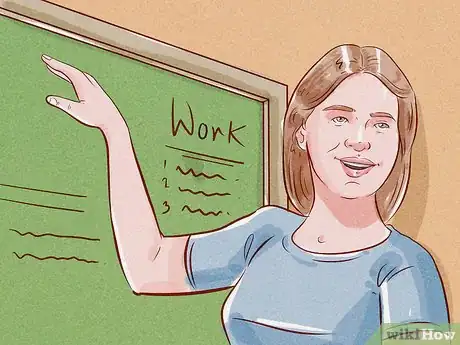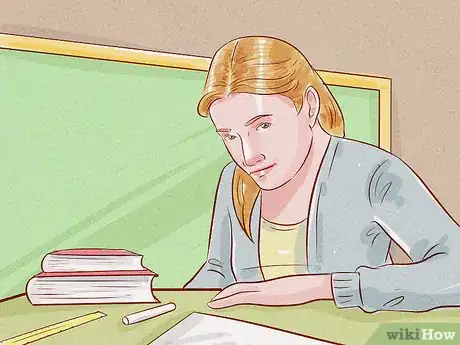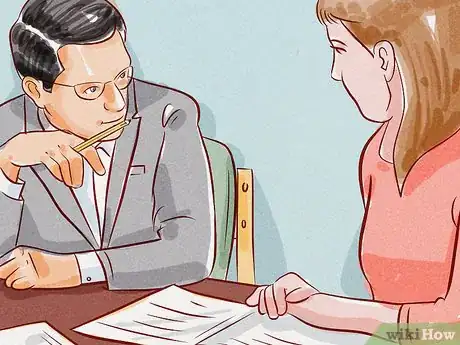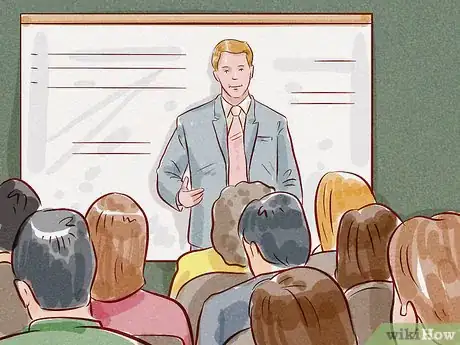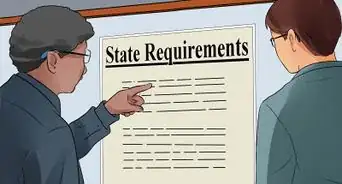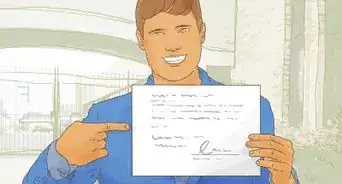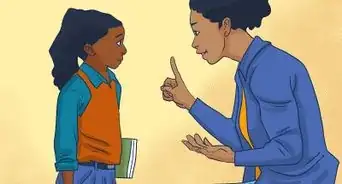This article was co-authored by Timothy Linetsky. Timothy Linetsky is a DJ, producer, and music educator that has been making music for over 15 years. He is a certified Ableton trainer and creates educational YouTube videos focused on producing electronic music. He has over 90,000 YouTube subscribers.
There are 15 references cited in this article, which can be found at the bottom of the page.
wikiHow marks an article as reader-approved once it receives enough positive feedback. This article received 41 testimonials and 89% of readers who voted found it helpful, earning it our reader-approved status.
This article has been viewed 959,786 times.
Teaching is one of the most important professions in today’s society. As a teacher, you will shape the minds of others and encourage them to think independently. To become a good teacher, it’s important to be organized. Create lesson plans, objectives, activities, and assessment plans well before each class day. Get your students interested in learning by fostering a positive, supportive, yet challenging classroom environment. Seek out other teachers for assistance, too.
Steps
Developing a Good Classroom Environment
-
1Create a daily objective for your students. This is your way of providing a roadmap for your students, it shows them that you’ve put thought into the day’s work and you know where it is heading. It's best if the objectives are clear, brief, and realistic. As each objective is completed, remind your students of what they’ve accomplished together.[1]
- For example, in a high school literature class, an objective might be to complete a close reading of a particular poem by the end of the period.
- Some teachers find it helpful to post that day’s objectives on the board.
- It’s okay if not every objective is met every day. In some cases it's better to follow the flow of a particular conversation, instead of railroading back to the original subject matter.
-
2Listen to your students. Ask them open-ended questions after they’ve made a statement. Encourage them to ask you questions as well. Show that you are listening to them by nodding your head or gesturing for them to continue. Give them eye contact while they are speaking and try your best not to interrupt, unless you must redirect the conversation.[2]
- Being an active listener shows your students that you respect their voice in the classroom. They will be more likely to give you respect as a teacher in return.
- It’s also a good idea to model for your students how to respectfully listen to someone while disagreeing with them. You might say, “I’m not sure I agree with what you are saying, can you tell me more? Or, does anyone else want to jump in?”
Advertisement -
3Keep students on task. Set time limits for classroom exercises or activities. In discussions, use your responses to their remarks as a classroom management tool. For example, you might say, “I really like what you are saying. How do you think it connects with objective number five?”[3]
-
4Push your students to succeed. Try to create an environment in which your students will be constantly intellectually challenged. Let them know that it is okay to fail on occasion. You want to strike a balance between setting too high of goals for them and being a push-over. Use your students’ progress to guide your way. They should be steadily improving, but not without considerable effort.[4]
- For example, you might give a short, advanced-level reading assignment to high school students and ask them to use a dictionary to look up unfamiliar words. If used sparingly, this is a great way to challenge students to expand their vocabulary.
Expert AnswerQWhen asked, "what's your favorite part about teaching?"
Timothy Linetsky is a DJ, producer, and music educator that has been making music for over 15 years. He is a certified Ableton trainer and creates educational YouTube videos focused on producing electronic music. He has over 90,000 YouTube subscribers.Music Producer & Instructor
 EXPERT ADVICEAnswer from Timothy Linetsky:
EXPERT ADVICEAnswer from Timothy Linetsky:Timmy Linetsky, a music teacher who teaches many of his lessons virtually, responded: "It’s just seeing the look on their faces when something clicks. And when I see that, I remember when it first clicked for me, and how excited I felt. Suddenly, they can express the things they want to express. It’s a very rewarding feeling, both online and in person. That’s my favorite part."
Dealing with Classroom Challenges
-
1Discipline in a prompt and thoughtful way. Make the rules for your classroom and each exercise very clear and consistent. If a student breaks a rule, handle it immediately in the classroom before moving forward. However, once you’ve made a disciplinary action, don’t dwell on it or you could create additional problems. Also, make sure that any consequences that you assign match the level of the offense committed.[5]
- For example, if a student accidentally disrupts a designated “quiet period” this can generally be corrected with a simple verbal warning for a first offense.
- You can also ask the student to stay after class and speak with you. This is one way to issue a consequence without disrupting your classroom.
-
2Assign leadership roles to difficult students. Some students create problems in a classroom due to sheer boredom or feeling disconnected with the subject or their teacher. Start with giving a challenging student small, personal tasks to complete. Then, over time, give them more difficult and public responsibilities.[6]
- For example, you might ask a student to serve as a time-keeper for an in-class exercise.
- Be aware that this is an option that won't work for every challenging student. If they don't do well at the simple tasks, don't give them more advanced ones.
-
3Express a personal interest in all students. If you show your students that you enjoy their company and value their opinions, then they are far less likely to exhibit challenging classroom behaviors. Make a point of asking your students about their daily lives and personal interests. While staying professional, tell your students information about you in return.
- For example, you might talk with your students about where they are going for an upcoming break.
EXPERT TIPTimothy Linetsky is a DJ, producer, and music educator that has been making music for over 15 years. He is a certified Ableton trainer and creates educational YouTube videos focused on producing electronic music. He has over 90,000 YouTube subscribers.Music Producer & Instructor
 Timothy Linetsky
Timothy Linetsky
Music Producer & InstructorWorking with students one-on-one? Timmy Linetsky, a music teacher, suggests "striking a balance between tailoring the curriculum between what they want to learn and what you think would be best for them to learn." He adds: "Sometimes you have to steer students in the right direction and convince them that something is relevant to them, even when they think it's not. Identify their weaknesses at the root rather than where they think the weakness lies."
-
4Stay calm when addressing argumentative students. It’s really easy to lose your cool when faced with a challenging or critical student. Instead, take a deep breath and try to look at their perspective. Ask them to explain their position in further detail. Encourage other students to enter into the discussion.[7]
-
5Give quiet students many avenues of participation. There are many possible reasons why a student might remain silent in your classroom. Encourage them to learn by creating a safe environment for all opinions. Offer a variety of assignment options, including journal submissions or email logs. Avoid putting a spotlight on quiet students, unless that fits your overall teaching style.[8]
-
6Offer assistance to struggling students. Do your best to identify students who are struggling academically early on. Consider offering in-class resources, such as pair exercises. Or, direct them to external resources, such as subject tutoring.
Maintaining the Right Mindset
-
1Be a professional at all times. Dress appropriately for your teaching environment. Keep your teaching materials and classroom organized. Spend time preparing for each day of teaching. Show respect when talking with your colleagues and administrators. Think about what it means to be a professional teacher and try to live up to that model.[9]
- It sometimes helps to think about one of your past teachers who you would describe as a true professional. Try to think about how you could in some ways mimic their behaviors in your own classroom and career.
-
2Laugh and keep your sense of humor. Try to teach your students that learning doesn’t have to be serious 24/7. If you do something that is funny or goofy, then laugh at yourself. Being a bit self-deprecating will make your students more comfortable with you. If you incorporate humor or jokes into your lesson plans, then your students will likely remember the material better as well.[10]
-
3Repeat positive mantras on bad days. Not every teaching day will go perfectly and some might even fall into the category of disaster. However, it’s important to stay positive or your students will pick up and reflect your negative energy. Take a moment to tell yourself, “It’s going to be okay,” or, “Tomorrow is a new day.” Put a smile on your face and keep going.[11]
- You might even say out loud, “I love teaching because…” and list off a few reasons. For example, think about a moment when you saw real improvement in a student’s life due to your efforts.
- If it’s been a bad day for the students, too, then you might even say that you want to do a “re-set.” Tell them that you want to formally start the day over from that point forward.
-
4Create good relationships with the parents of students. Communication is key when working with parents. Keep in touch with them via in-person conferences as well as written behavioral reports. Let them know that you are interested in their ideas and perspectives on teaching. You can also solicit their help for events and celebrations in your classroom.[12]
- Make contact with the Parent Teacher Association (PTA) at your school and ask what you can do to help.
Improving as a Teacher
-
1Seek out teaching mentors. Look for other teachers at your school who are willing to discuss teaching with you or who will even let you sit in on their classes. If they are interested, invite them to your classroom as well. After they’ve seen you teach, ask them to provide you with constructive criticism. See if they have suggestions for how you can be an even better teacher.
- For example, they might suggest that you state your classroom objectives more clearly. Then, you can talk about how you’d go about doing this.
- It’s also a good idea to exchange teaching materials with your mentors and colleagues. Show them the format that you use for quizzes or tests and ask to see their versions. You don’t have to teach the same subject to benefit from talking about teaching.
- You can also find mentors via teaching organizations or even at conferences. Stay in touch with the people that you meet and seek out their advice when you need it.
-
2Take time to reflect. At the end of each semester or teaching period, sit down and evaluate what worked well and what didn’t. Be honest with yourself and realistically assess what is in your power to change before teaching that particular class again. If you're preparing for a certain course that always causes problems, you might consider reaching out to your mentor for advice.[13]
- For example, you might find that your students react better to projects using media. If that’s the case, think about how you can incorporate more media-driven activities in your classroom.
-
3Take advantage of professional development opportunities. Go to teaching conferences in your area and meet other education professionals. Write articles about teaching and publish them in local magazines or newspapers. Serve as a grader for exams in your area, such as the Advanced Placements tests. Keep learning and you’ll be a model for your students, too.[14]
How Can You Keep Students Motivated In School?
Community Q&A
-
QuestionHow do I deal with a bad student as a teacher?
 Community AnswerThere is no such thing as a good or bad student. Students are students who approach you for learning new skills; you have to find out their areas of interest. Help them find the room for improvement and be there for them when they need you.
Community AnswerThere is no such thing as a good or bad student. Students are students who approach you for learning new skills; you have to find out their areas of interest. Help them find the room for improvement and be there for them when they need you. -
QuestionWhat are some good tricks I can use when teaching someone how to listen?
 Community AnswerTry to make it engaging. For example, tell the person a simple story, and then ask him or her questions to see how many details he or she can remember. The person will have to listen to your story in order to answer the questions correctly, but it won't feel forced; most people enjoy a good story.
Community AnswerTry to make it engaging. For example, tell the person a simple story, and then ask him or her questions to see how many details he or she can remember. The person will have to listen to your story in order to answer the questions correctly, but it won't feel forced; most people enjoy a good story. -
QuestionDo I have to be kind to earn their trust?
 Community AnswerYes, in some cases. You should be forgiving, yet never let a student feel like s/he can do anything. Set basic rules that are easy to follow and have clear expectations.
Community AnswerYes, in some cases. You should be forgiving, yet never let a student feel like s/he can do anything. Set basic rules that are easy to follow and have clear expectations.
Warnings
- If you develop safety concerns about a particular student, don’t hesitate to reach out to administrators or other teachers for advice and assistance. Trust your instincts.⧼thumbs_response⧽
- Give yourself some time to develop into the best teacher that you can be. Don’t expect to happen overnight and be patient with yourself as you learn.[16]⧼thumbs_response⧽
References
- ↑ https://www.teachthought.com/pedagogy/25-things-successful-teachers-do-differently/
- ↑ https://owlcation.com/academia/Characteristics-Of-A-Good-Teacher
- ↑ https://www.ncbi.nlm.nih.gov/pmc/articles/PMC3776909/
- ↑ https://kstatelibraries.pressbooks.pub/EDCI702/chapter/module-3-the-personal-attributes-and-skills-of-effective-teachers/
- ↑ https://education.ky.gov/curriculum/standards/teachtools/Pages/Characteristics-of-Highly-Effective-Teaching-and-Learning-(CHETL).aspx
- ↑ https://www.teachthought.com/pedagogy/difficult-students/
- ↑ https://www.edutopia.org/article/addressing-persistent-defiance
- ↑ https://ctl.wustl.edu/resources/increasing-student-participation/
- ↑ https://files.eric.ed.gov/fulltext/EJ787753.pdf
- ↑ https://www.edutopia.org/blog/laughter-learning-humor-boosts-retention-sarah-henderson
- ↑ https://jan.ucc.nau.edu/~slm/AdjCI/Teaching/Teacher.html
- ↑ https://www.greatschools.org/gk/articles/what-makes-a-great-teacher/
- ↑ https://poorvucenter.yale.edu/ReflectiveTeaching
- ↑ https://lesley.edu/article/7-ways-professional-development-helps-you-become-a-great-educator
- ↑ https://www.greatschools.org/gk/articles/what-makes-a-great-teacher/
- ↑ https://hbr.org/2007/07/the-making-of-an-expert
About This Article
To be a good teacher, create a healthy and supportive classroom environment. You can do this by asking your students open-ended questions like "Can you tell me why you feel that way?" to show that you value and respect their opinions. Then, show that you’re listening to them by nodding, maintaining eye contact, and not interrupting when they speak. When you’re an active listener to your students, they’re more likely to give you respect as a teacher in return. Additionally, practice fairness by making sure your classroom rules are clear, consistent, and apply to all of your students. For more tips, like how to push your students to succeed, read on!


